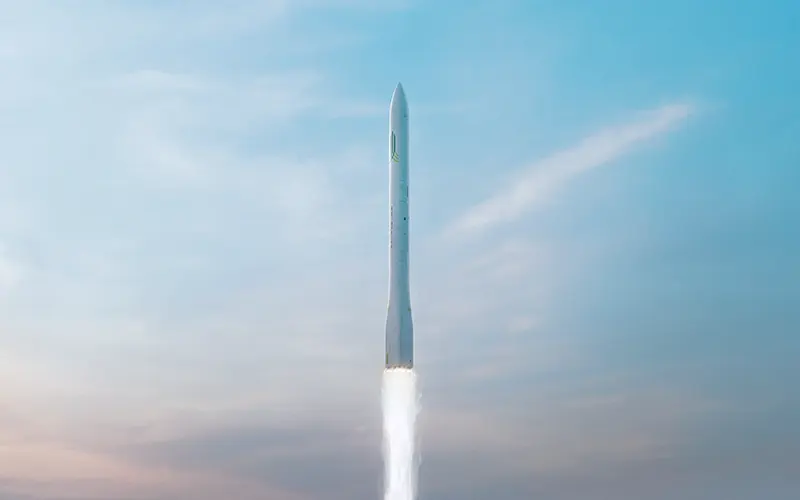
German rocket builder HyImpulse announced on 16 October that it had secured €45 million in new funding to continue developing its SL-1 rocket. The company’s press release announcing the new funding, however, seemed more concerned with dressing down the European launch industry than outlining what the additional capital would enable.
In a statement accompanying the press announcement, Christian Schmierer, the company’s CEO, said, “Europe does not have its own access to space.” This claim is inaccurate, as the continent currently has two operational launch systems, Ariane 6 and Vega C. Building on this inaccuracy, Schmierer claimed that with the injection of additional capital, the company would be able to accelerate the commercialization of its SL-1 rocket, “making Europe more independent and competitive.”
The SL-1 is a 33-metre-tall three-stage rocket designed to deliver up to 600 kilograms to low Earth orbit. Each stage is powered by clusters of hybrid rocket motors that burn aerospace-grade paraffin with liquid oxygen as the oxidiser. The company is also working on an optional space tug called HyMOVE, which will be capable of delivering payloads into multiple orbits. The inaugural flight of SL-1 is expected to occur in 2027.
Ariane 6, which is already operational, is offered in two variants: Ariane 62 and Ariane 64. The more powerful of the two is capable of delivering over 21 tonnes to low Earth orbit. Vega C, which is also operational, is a small-lift rocket capable of delivering up to 2,300 kilograms to low Earth orbit. Two Ariane 6 rockets have been launched this year, with two additional flights expected before the end of the year. The Vega C launch system has also been launched twice this year, with a third launch scheduled before the end of the year.
At peak launch cadences, the combination of both Ariane 6 and Vega C will account for approximately 14 flights per year. This is a fraction of what SpaceX conducts with its Falcon 9 rocket and aims to perform with its Starship rocket. This fact is highlighted in the HyImpulse press release, which cites the “Space Economy Report 2024” (which is presumably referencing the Novaspace Space Economy Report, although its sourcing is not clear), stating that “European providers accounted for less than one per cent of all global launches in 2024.” While a stark statistic, it does raise an obvious question: if Europe truly has no independent launch capability, how has it managed to account for anything above zero in the global launch market?
The year 2024 was a tumultuous one for European launch providers. After years of delay that saw its predecessor retired before its introduction, Ariane 6 took to the skies for the first time. However, the flight was less than perfect, with the upper-stage engine failing to restart for a deorbit burn. At the same time, Avio was working to return Vega C to flight after a late 2022 launch failure and a mishap during a recertification test of the rocket’s second stage. This resulted in Europe’s lowest launch cadence in decades, equalled only by the similarly tumultuous 2023. This is the context conveniently left out of the HyImpulse market analysis.
After citing the “Space Economy Report 2024,” the press release claims that Europe is “highly dependent on non-European providers.” The statement lacks clarity on whether it refers to commercial or institutional payloads. Since discussions of strategic capabilities typically concern institutional needs, it can be assumed that this is what the company is referring to.
Europe and its constituent countries don’t always launch critical institutional payloads aboard European rockets. In 2024, EUMETSAT selected SpaceX and its Falcon 9 rocket to launch a next-generation weather satellite. The year also saw the European Union forced to launch four Galileo global navigation satellites aboard Falcon 9 rockets as European launch cadences were at their lowest. However, with launch capabilities returning, Europe is once again choosing European. The first commercial flight of Ariane 6 carried the CSO-3 spy satellite for the French military. Similarly, Vega C’s return to flight carried the Sentinel-1C Earth observation satellite for the European Union’s Copernicus programme.
